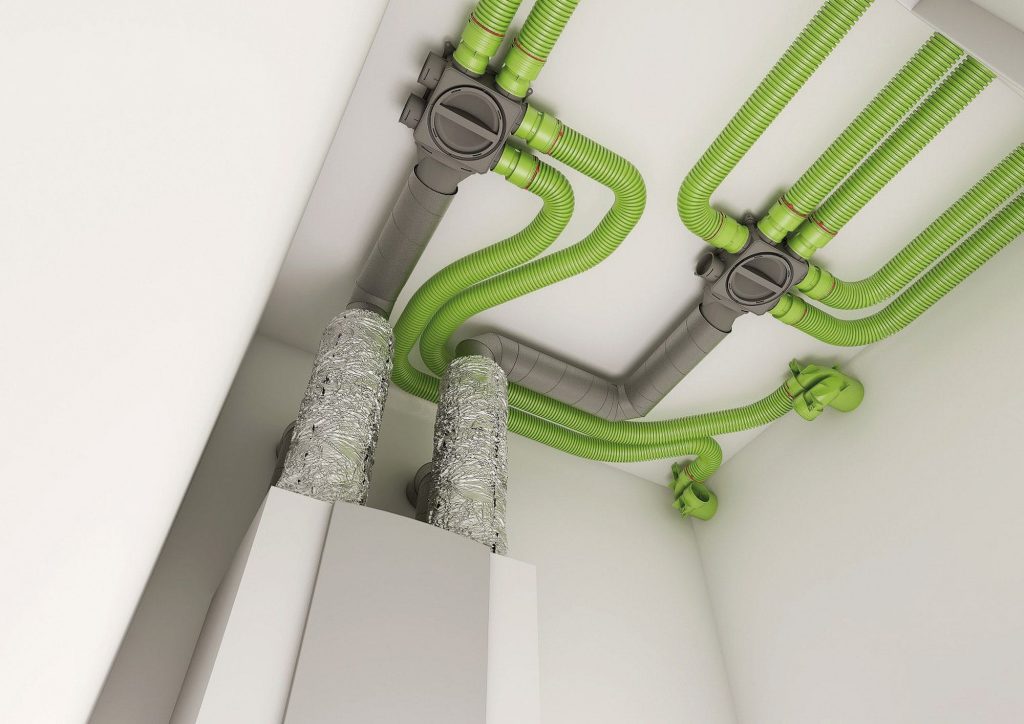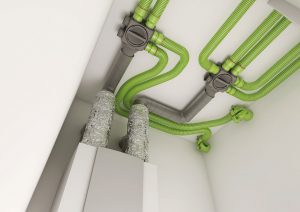MVHR works with underfloor heating
MVHR units are compatible with underfloor heating systems. These devices use hot and cold water from the underfloor heating system to change the temperature of the air. MVHR systems are particularly efficient in large dwellings and can provide up to 75% humidity recovery. As a result, they help to maintain the relative humidity in the home at optimum levels. To find out if MVHR is right for your home, read on for more information about how this technology can help your home.
MVHR systems work with underfloor heating UK, as they are compatible with other mechanical systems in the home. This type of ventilation system can also help to achieve the UK’s low carbon climate change objectives. Underfloor heating is highly compatible with MVHR systems. The way the system works is to move air between different rooms. For example, the air extraction zone pulls warm air up from the floor while the air input zone pushes colder air down. This helps to retain warmth in rooms longer.
MVHR is a ventilation system
MVHR, or mechanical ventilation with heat recovery, is an air quality solution for highly insulated and airtight buildings. It can be used in new homes or custom-built properties to improve indoor air quality. They can also be retrofitted to existing properties during renovations. MVHR systems are highly effective for improving the air quality inside a building, reducing the incidence of condensation and black mould, and lowering heating costs.

MVHR systems work by moving air between rooms and using an internal heat exchanger. They move air from one room to another and are highly compatible with underfloor heating UK. The air extracted by MVHR systems pulls warm air from the top of a room, while the air input from MVHR units pushes air downwards. Because MVHR systems are compatible with underfloor heating, they can be an excellent choice for homes with multiple levels of heating and cooling.
MVHR is not a heating system
There are several differences between MVHR and a standard heating system. A standard heating system can be retrofitted, but it is more expensive than installing the system in a new build. The Building Regulations for new homes, part L1A, deal with the conservation of power and fuel. This part of the regulations mandates that buildings have a minimum airtightness of 10m3/hr/m2, while good practice is regarded as being seven to ten. Passivhaus, the highest energy efficiency standard, requires that homes be airtight to 0.85m3/hr at 50Pa.
Post heaters are a part of an MVHR and are positioned within the supply duct. They provide heat to living areas only, while not heating wet rooms. Post heaters are electrically operated or heated with warm water. Depending on the type of heater, post heaters may beHeat located at different locations in the building. Some systems are designed to integrate with domestic hot water heating systems.
MVHR is not suitable for flat channel ducts
In addition to being noisy, MVHR systems produce a whistling noise, which is not just a mechanical fan. Localised air velocity is a major source of noise complaints, and this is often the result of poor ducting design, installation or incorrect valve settings in rooms. Good ducting design will incorporate noise attenuation, and metal ducts may require attenuators to be effective.
MVHR systems are suitable for a variety of dwellings, although they may not be suitable for flat-channel ducts. Flat-channel ducts are usually 100mm to 150mm in diameter, with the diameter of the ducting increasing as incoming air is insulated. Ducting is not suitable for all properties, however, and requires special considerations to be taken. Fortunately, it is possible to retrofit MVHR systems in some properties, although older properties are not usually airtight enough for a fully-installed system.
MVHR is difficult to clean
An MVHR system comprises concealed ducting that leads to the heat exchanger unit located in a utility or cupboard. Although not suitable for lofts, MVHR systems can be installed in a mid-floor zone. Most of these systems feature automatic or manual boost settings. Some have air filtration. MVHR systems run at 80% efficiency and are virtually inaudible in normal use.
MVHR is hard to clean with underfloor heating UK but the benefits far outweigh this inconvenience. It is estimated that a typical 100m2 bungalow will require a flow rate of 30 L/s for a continuous ventilation system. A 90 percent-efficient MVHR will save the homeowner money each year. And the system’s effectiveness depends on various factors. The air-tightness of the home, the heating system’s efficiency, and the cost of fuel used for the system’s operation all play a role.





